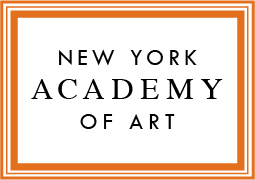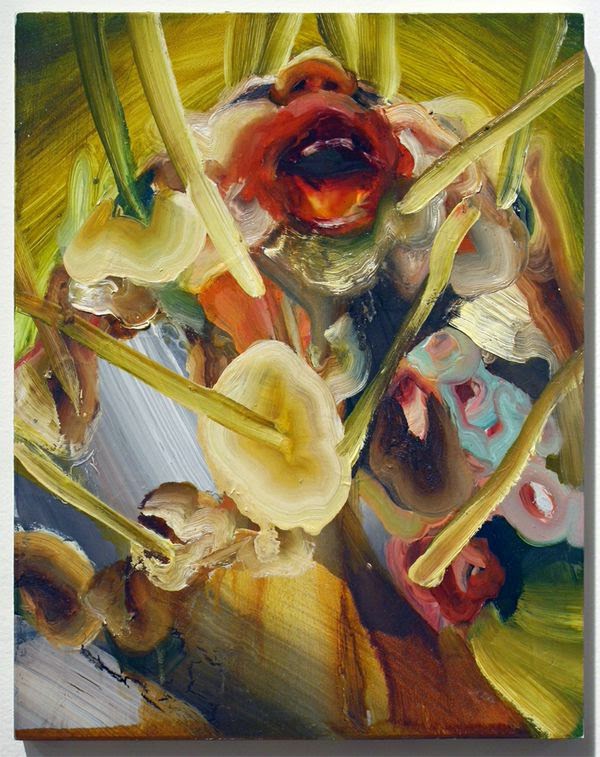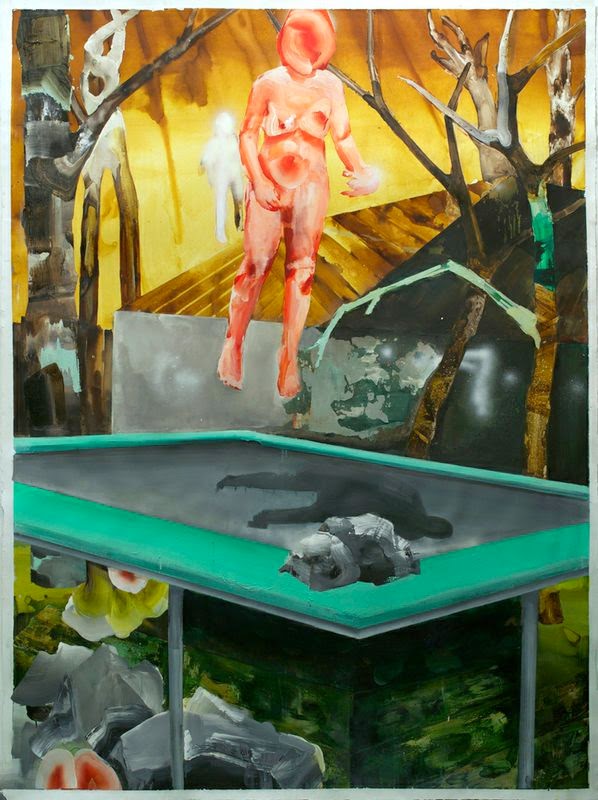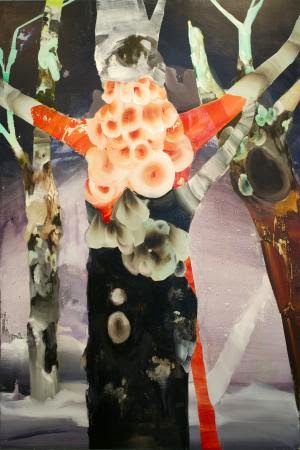 Have you had the chance to see the “2014 Fellows Show” at the Academy? If not, RUN don’t walk to Wilkinson Gallery, 111 Franklin Street, before it closes on Sunday, September 29th. At the show you will be drawn to Elizabeth Glaessner’s (MFA 2013, Fellow 2014) work. Her post-apocalyptic paintings slowly reveal intricate allegories suspended in time. Her chromatically vivid, psychologically dense, personal narratives take the viewer on a journey through the artist’s interior life. Both intensely strategic and wildly intuitive, each detail of her work has a jewel-like quality that is the result of the artist’s extreme focus. And yet, when taken as a whole, the improvisational nature of the work links every component into a rapturous symphony of exotic symbols and voluptuous color.
Have you had the chance to see the “2014 Fellows Show” at the Academy? If not, RUN don’t walk to Wilkinson Gallery, 111 Franklin Street, before it closes on Sunday, September 29th. At the show you will be drawn to Elizabeth Glaessner’s (MFA 2013, Fellow 2014) work. Her post-apocalyptic paintings slowly reveal intricate allegories suspended in time. Her chromatically vivid, psychologically dense, personal narratives take the viewer on a journey through the artist’s interior life. Both intensely strategic and wildly intuitive, each detail of her work has a jewel-like quality that is the result of the artist’s extreme focus. And yet, when taken as a whole, the improvisational nature of the work links every component into a rapturous symphony of exotic symbols and voluptuous color.
Q: What are the major themes you pursue in your work?
A: Ritual, absurdity, meaning, invented mythology, shifting landscape, horror
Q: Where did you grow up?
A: Things I see everyday – often the most banal objects seem to have the most potential to be transformed into something totally ecstatic.
Q: If you could retake any class at the academy what would it be and why?
A: All of the master classes I took – Julie Heffernan, Natalie Frank, Inka Essenhigh – those were all incredibly influential and encouraging for me. Also, Wade’s animal class (but with a mask to eliminate the smell), Jacobsmeyer’s comp and design, Catherine Howe’s alchemical painting, Margaret Bowland, Monica Cook, any class where Kurt Kauper lectures.
Q: What materials do you like to use and how do you know when your work is finished
 Q: During your post-graduate year, what did you learn most about yourself and practice?
Q: During your post-graduate year, what did you learn most about yourself and practice?A: I learned to trust my instincts more and the importance of community and conversation.
A: Be idealistic and read the news.
Q: What 3 quirky things can we find in your studio?
A: My stuffed chipmunk, Chester, plaster chicken feet and a studio mate.
Q: Do you paint to music or paint in silence?
A: both, today I was listening to Nancy Sinatra and La Luz but I switch it up often.
A: A little more bitter.
A: “Those that Prefer to Stay in Trees” This 4 by 6 foot work on panel depicts a creature half born out of a tree bearing mutations which are indicative of what we might call a toxic environment, however in this world these mutations are celebrated and the toxic landscape becomes a place where new creatures and mutants thrive. This particular creature is enamored with the Lady of Ephesus (the Ionian fertility goddess) adapting her accessory breasts and presenting herself as a source of nourishment and birth. She has a commanding presence and watches outward with an ominous eye.
Q: Finally, what’s next? Any immediate plans to share?
A: I’ll be working in my studio in Greenpoint, continuing to work with all the incredible people at P.P.O.W. and teaching once a week at Montclair University. I also look forward being a part of another critical and inspiring community!
Annually, the Academy awards Post-graduate fellowships to three exemplary graduating students chosen through a highly competitive selection process. During their Fellowship year, the Fellows receive studio accommodations, a stipend, exhibition opportunities and teaching assistantships to expand the depth and breadth of their artistic practice. The “2014 Fellows” show represents the culmination of their Fellowship year and entree into the art world as professional artists.




